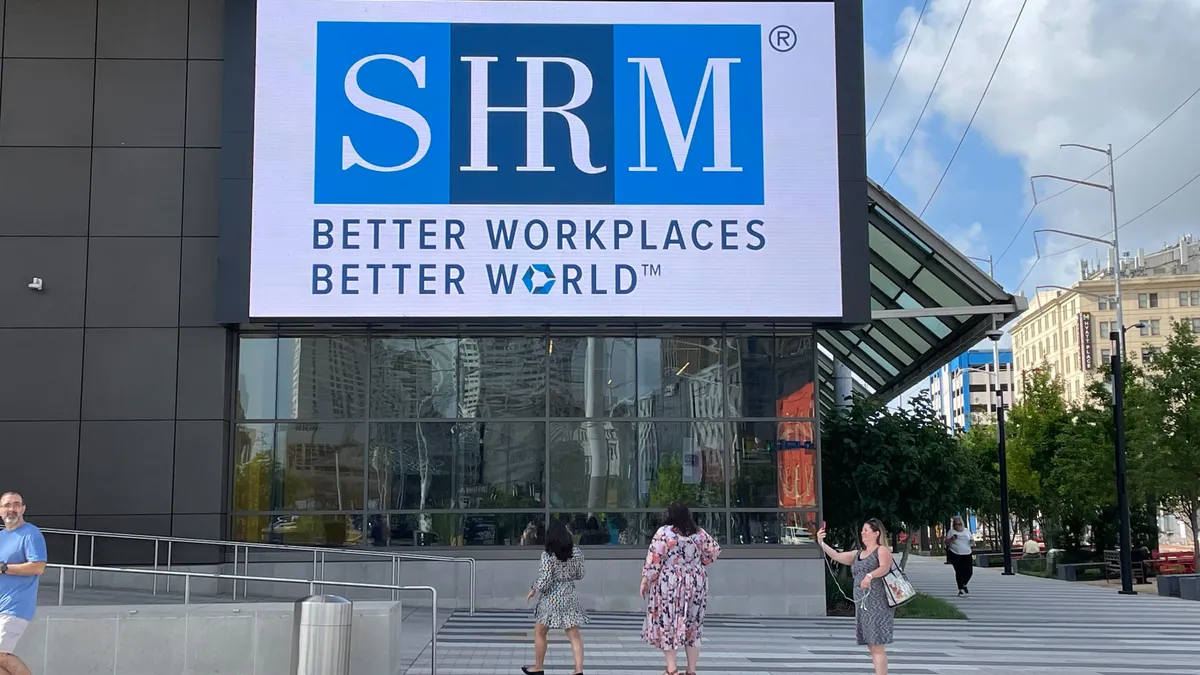WASHINGTON, D.C. — AI has been top of mind all year, but Sam Altman’s ousting from OpenAI — and subsequent rehiring — have really upped the stakes. The OpenAI drama permeated news feeds, Slack channels and social media conversations, reaffirming that interest in AI and its intersection with work won’t be going away any time soon.
Along with the shifting attitudes of employers and employees, U.S. employment law also shapes the conversation. Just last year, New York City restricted certain AI practices in hiring; this year, U.S. Equal Employment Opportunity Commission Vice Chair Jocelyn Samuels emphasized her agency’s commitment to protecting workers from labor violations due to AI.
As Silicon Valley tech bro drama brewed, national members of the Society for Human Resource Management made their way to Washington, D.C. for the firm’s annual Volunteer Leaders’ Business Meeting. One of the key conundrums HR professionals sought to address during the summit’s 75th annual Capitol Hill Day was AI at work.
After SHRM Chief of Staff, Head of Public Affairs and Corporate Secretary Emily Dickens gave remarks, she sat down with HR Dive and offered some advice in the wake of frenzied conversations about AI.
How AI can support diverse hiring initiatives
The first piece of advice Dickens offered was that HR professionals should embrace AI in talent acquisition instead of shying away from it. Acknowledging NYC’s restriction, Dickens painted a picture of a talent acquisition world where AI doesn’t recreate bias against job candidates from marginalized backgrounds — a phenomenon that many, such as EEOC Commissioner Keith Sonderling, have warned against.
“Imagine having the additional resource of AI to help us,” Dickens told HR Dive. “We could finally solve some of the problems about getting untapped talent: disabled people, people who are formerly incarcerated, people without degrees. We could finally think about getting those groups into the workplace.”
Anonymizing job applications, for example, is how AI can help human talent acquisition professionals here. “As we look at more skills-based hiring, the algorithms that are looking for the skills can pull that out,” she explained. “That person doesn't know anything personal about you, other than you have the skills.”
This wouldn’t be the first time that HR or talent acquisition professionals have flipped the script: Following an EEOC suit and at the agency’s behest, tech job site Dice.com must use AI to comb its job postings for discriminatory language.
Dickens emphasized that AI use in hiring can be particularly helpful for midsize or small businesses seeking to fulfill diverse hiring goals; often, they do not have the social media reach that larger companies do, which can lead to a more diverse talent pool.
HI + AI = ROI: The business case for early adoption
Borrowing from an executive’s talk she had heard the day before, Dickens said, “HI + AI = ROI. That is our perspective — the human intelligence plus the artificial intelligence will lead to the ultimate ROI for organizations and individuals.”
Beyond DEI-focused hiring, Dickens posited the idea that smoother, AI-led processes are crucial to HR’s efficiency and productivity: “We could free up HR executives to focus on the people, as opposed to focusing on all of those other compliance aspects and things that can be done with the support of this additional technology.”
Her main business case for early adoption was that this is a technology that can only improve with use. Dickens had heard a speaker say, “AI is at the worst it's going to be right now.” That sentiment resonated with her, because “you just can't leave the software or whatever tool you're using to solve the problem.”
Acknowledging that her stance changes as rapidly as the changes in the tech landscape, Dickens’ second piece of advice was that leadership should set lenient workplace policies for employee AI use — at least, at first.
“You’ve got to free up your staff to pursue this individualized experience and make it easy for them. Maybe there’s something to paying for the subscriptions to ChatGPT and others, so that [employees] can use it. So they can figure out how they can make the best of this tool — how it can be their personal HI plus AI in their job, since everyone’s role is different,” she said.
She suggested that employers give workers a “kind of ‘get out of jail free’ card for the first year or so,” encouraging them to use and play with it. She reemphasized, “The more you use it, the better you’ll figure out how it can help you.”






















